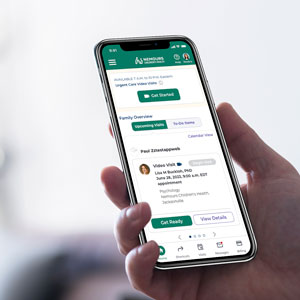Stem Cell Transplant for Children
What Is a Stem Cell Transplant?
Blood has three main cell types:
- Red blood cells (carry oxygen)
- White blood cells (fight infection)
- Platelets (clot the blood)
New blood cells (called stem cells) begin in the bone marrow — the spongy material found inside the bones. They enter the bloodstream when mature.
A stem cell transplant uses chemotherapy, radiation or immunotherapy to remove unhealthy cells from the body or bone marrow and replaces the bone marrow with healthy stem cells. The goal is to treat childhood cancers and nonmalignant (noncancerous) blood and bone marrow diseases. A stem cell transplant is also called a blood and bone marrow transplant.
There are three main types of stem cell sources based on how and from whom the stem cells are collected:
- Bone marrow — collected during a surgical procedure where bone marrow is collected directly from the bone via a needle aspiration
- Peripheral Blood Stem Cells — stem cells are “mobilized” out of the bone marrow with medications and then collected through a filtering process called apheresis
- Umbilical Cord Blood Stem Cells — stem cells from a newborn’s umbilical cord can be frozen and stored in a blood bank for future use in a hematopoietic stem cell transplant
Types of Stem Cell Transplants
There are two main types of pediatric stem cell transplants:
Autologous bone marrow transplant
If kids use their own stem cells, it’s called an autologous stem cell transplant (or autologous bone marrow rescue). Doctors typically use peripheral blood stem cells that are collected prior to the transplant and then frozen for later use.:
After intensive treatment such as high-dose chemotherapy, doctors reinfuse the stem cells back into the child’s blood. There, they make new healthy cells. The primary goal of an autologous bone marrow transplant is to “rescue” a child from the effects of high doses of chemotherapy.
Recently autologous bone marrow transplants have been used in clinical trials as the vehicle for gene therapy.
Allogeneic stem cell transplant
When a parent, sibling or unrelated person donates genetically matched stem cells, it’s called an allogeneic stem cell transplant. Similar to an autologous stem cell transplant transplant, patients are typically treated with chemotherapy or radiation or immunotherapy to remove unhealthy cells and then receive a stem cell infusion, except in an allogeneic stem cell transplant, doctors get healthy stem cells from a donor’s bone marrow or blood.
Doctors use allogeneicstem cell transplants to treat leukemia, the most common form of childhood cancer. Leukemia is cancer of the white blood cells, which starts in the bone marrow.
Doctors treat different types of childhood leukemia with allogenic bone marrow transplants, including acute lymphoblastic leukemia (ALL) and acute myeloid leukemia (AML). Learn more about treating childhood leukemia.
The National Marrow Donor Program (NMDP) has recognized Nemours Children’s as an affiliated center for matched unrelated donor transplants. Many insurance providers also recognize us as a Center of Excellence.
Pediatric Bone Marrow Transplant at Nemours: Why Choose Us
Our Transplant and Cellular Therapy Program is accredited by the Foundation for Accreditation of Cellular Therapies (FACT). Only hospitals with the highest-quality bone marrow transplant care and best outcomes have earned this accreditation.
We also rank among the very best in the country for both pediatric orthopedics (bone treatment) and cancer care (U.S. News & World Report named Nemours Children’s Hospital, Delaware one of the “Best Hospitals”).
Our combined expertise allows us to diagnose and treat common, rare and complex leukemias and other diseases. We also offer:
- Safer treatments. Before a pediatric stem cell transplant, your child undergoes a detailed risk assessment. These risk assessments involve tests that can find issues that may increase your child’s risk for transplant complications. With this information, your child’s transplant team can readjust the treatment plan to make the process safer.
- Expertise in managing transplant complications. Bone marrow transplants affect the immune system for months — even years. These long-term effects can increase the risk for infections and other complications. We use medicines, support programs and innovative medical therapies to help your family manage and treat issues after a transplant. Read more about treating children with leukemia.
- High standards. Our doctors started a national program that reviews patient cases with transplant experts from 10 other institutions around the country. This program helps set and improve the quality of stem cell transplants around the United States.
- The latest therapies. CAR T-cell therapy is a revolutionary new leukemia treatment. It tends to have less side effects than a bone marrow transplant. It also involves reprogramming your child’s own cells to kill leukemia cells, so you don’t need a donor. Through our Transplant and Cellular Therapy Program, we offer CAR T-cell therapy to eligible children. Find out about CAR T-cell treatment for leukemia.
- Dedicated team. Nationally recognized bone marrow transplant specialists and experienced nurses make up your transplant team. A compassionate transplant coordinator and social workers provide treatment education, tips to manage side effects, and resources for your child and family.
- Transplant coordinators. Our transplant coordinators are registered nurses with stem cell transplant expertise. They’re with you at every step to arrange appointments, help find potential donors, help with paperwork, explain what to expect and be a familiar face. They support and guide families through the entire process and beyond.
- Sense of normalcy and home. We provide an environment where kids and families can find fun and normalcy during long-term hospital stays. Some of our offerings include play areas, on-site learning, video games and movies, mental health counseling and pet therapy.
Pediatric Cancers and Blood Disorders We Treat With Stem Cell Transplants
We use stem cell transplants to treat childhood cancers and blood disorders including:
- Cancers (leukemias, lymphomas, neuroblastoma, brain tumors, bone tumors like Ewing sarcoma and soft tissue sarcomas like rhabdomyosarcoma)
- Blood disorders (sickle cell disease and other hemolytic anemias like thalassemia)
- Bone marrow disorders (myelodysplastic syndrome, severe aplastic anemia)
- Primary immune system disorders (hemophagocytic lymphohistiocytosis, or HLH)
- Inherited metabolic diseases (called inborn errors in metabolism, or IEM)
Noncancerous Bone Marrow and Immune System Disorders We Treat With Stem Cell Transplants
We treat nonmalignant (noncancerous) bone marrow disorders, immune system deficiencies and some metabolic disorders with allogeneic bone marrow transplants.
Some of the nonmalignant conditions we treat include:
- Inherited bone marrow failure syndromes (Fanconi anemia, Diamond Blackfan anemia)
- Primary (inherited) immune disorders (severe combined immunodeficiency, Wiskott-Aldrich syndrome, leukocyte adhesion deficiency)
- Metabolic storage diseases (Hurler syndrome, metachromatic leukodystrophy, Krabbe disease, or globoid leukodystrophy)
Refer a Patient for Care in the Nemours Children’s Health Center for Cancer and Blood Disorders
Together, we can achieve the best possible outcome for your patient.
Stem Cell Transplant Process: What to Expect
Children getting bone marrow transplants need very specialized care from their first visit and throughout treatment, recovery and beyond. Transplants typically take up to three weeks for planning and preparation. Kids then need another six weeks of inpatient hospital care in special blood and bone marrow transplant units staffed by highly trained physicians and nurses.
The process varies depending on the type of pediatric bone marrow transplant procedure, the condition we’re treating and other factors. But overall, you can expect:
- Planning. Planning includes consultation with your treatment team, physical examination, medical testing and donor match.
- Conditioning. Conditioning includes chemotherapy and/or radiation therapy to treat the disease and make room for healthy stem cells.
- Transplantation. During this procedure, doctors give donor stem cells intravenously, like a blood transfusion, while your child watches TV, plays games, creates art or works with Child Life specialists.
- Engraftment. Engraftment happens when the stem cells mature and begin to make blood cells. This part of the process can take two to four weeks.
- Recovery. Recovery involves a month of inpatient hospital monitoring. This time allows doctors to predict and treat side effects and complications as your child’s immune system strengthens. During this time, we encourage and support your child’s recovery with music, art, pet, physical, occupational and speech therapy. Being active helps kids recover faster. We also prescribe physical medicine and rehabilitation, pain management services, palliative care (to manage physical symptoms) and integrative medicine therapies. These therapies include massage, hydrotherapy, biofeedback, yoga, meditation and more.
- Transition. This step helps transition your child and family throughout the process and from hospital care to home care.
- Follow-up. Follow-up involves maintaining frequent outpatient or inpatient follow-up care during the crucial first 100-day post-transplant mark. We also watch your child’s health long term.

